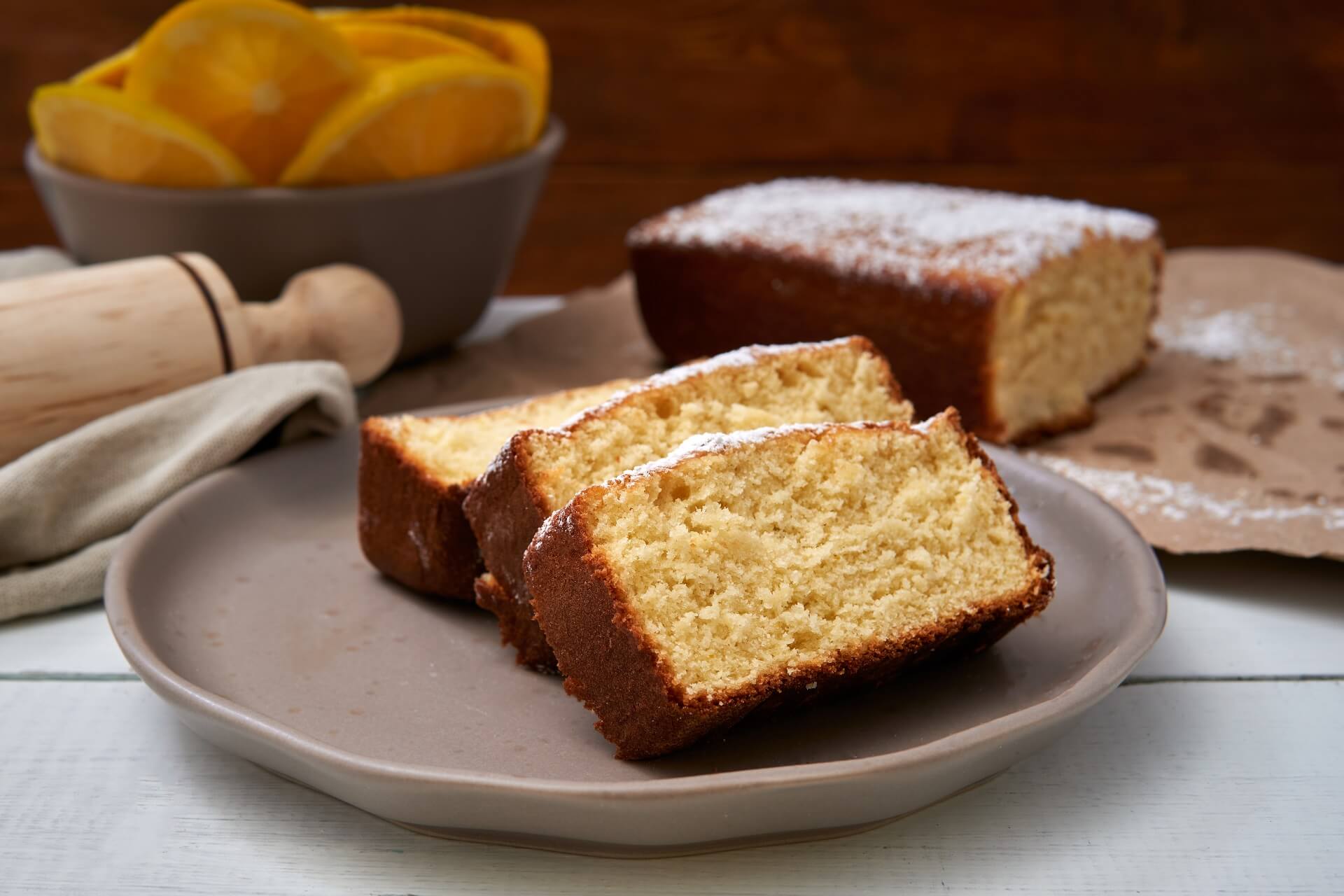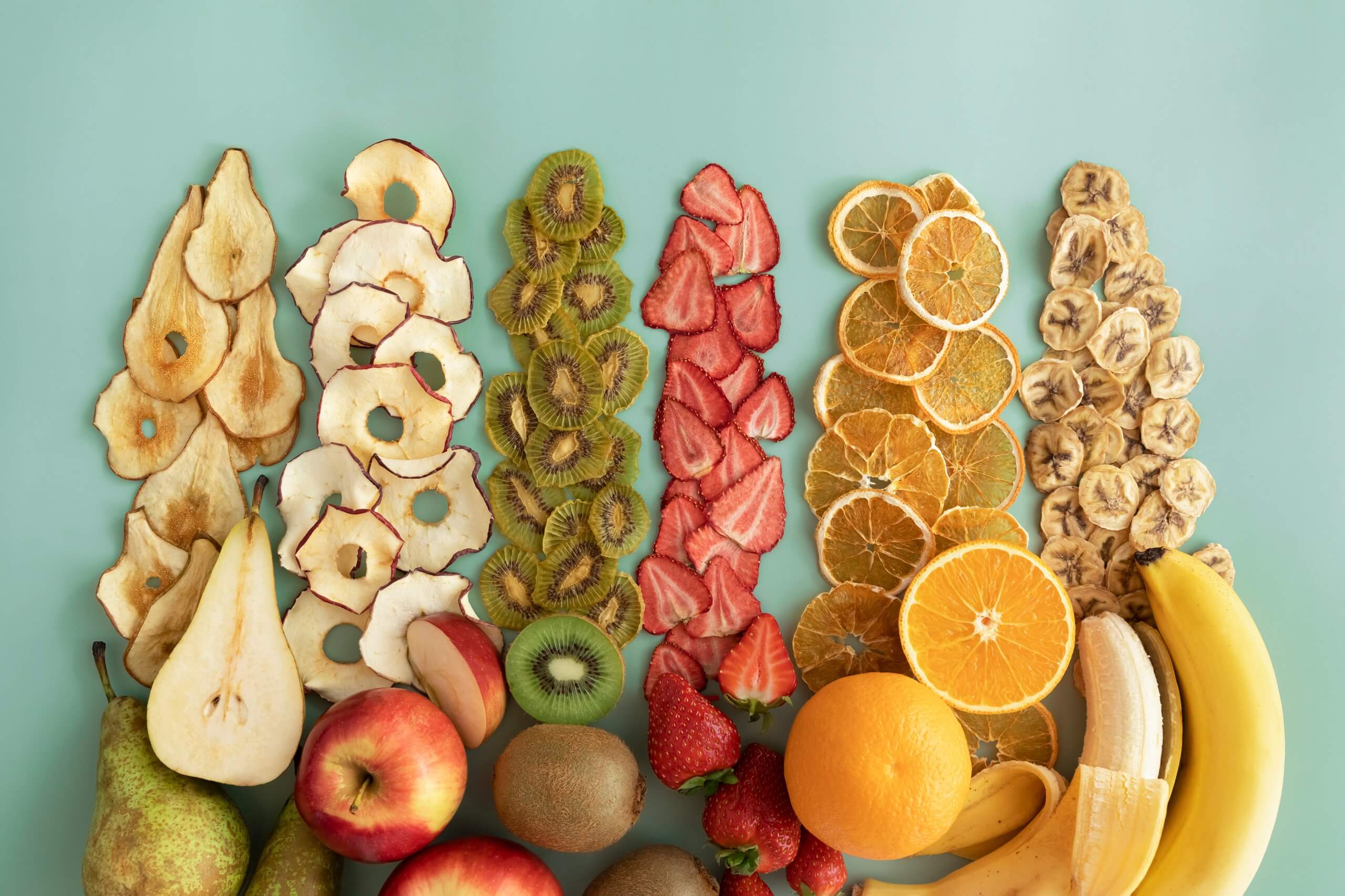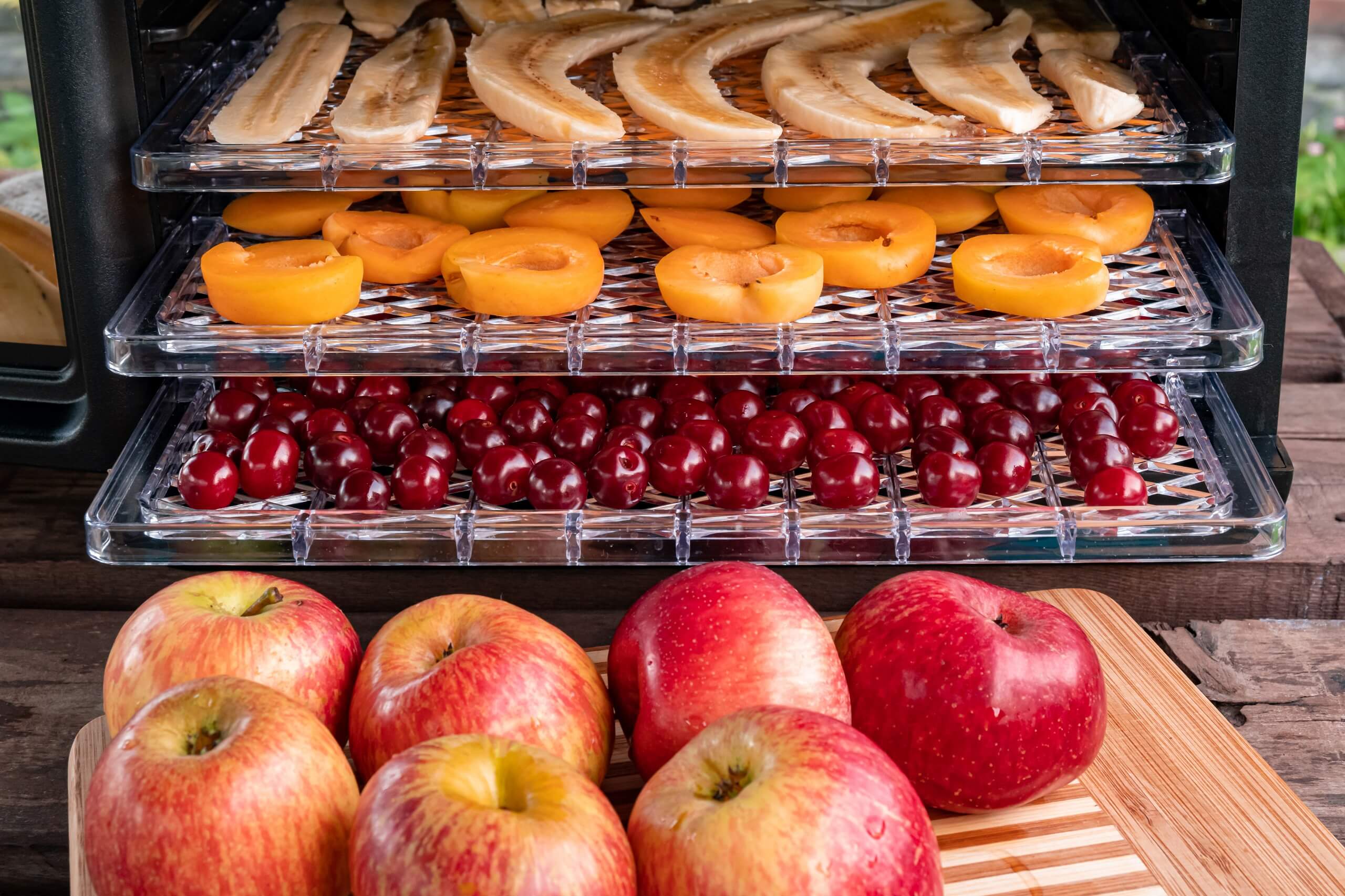If you are looking for a spongy orange sponge cake recipe, with that homemade flavor of the sponge cakes of a lifetime and easy to prepare, don’t miss this recipe!
Ingredients
- 5 Large eggs (size L)
Preparation
- We will start by putting the eggs and sugar in a large bowl using the electric whisk until we have a creamy, whitish mixture that has at least doubled its volume.
- Lower the mixer to the minimum speed and add the sunflower oil until it is dissolved in the mixture. In the same way, we add the orange powder or grain (depending on which we have chosen) from Vegenat. Finally, we integrate the orange zest into the mixture.
- On the other hand, in a separate bowl we lightly mix the flour and yeast to then incorporate them into the dough that we had prepared before through a sieve or strainer so that the flour is aerated.
- Once the dough is prepared, the next step will be to transfer it to the mold where we want to bake it. For the size of this cake, the ideal would be a mold between 22 cm and 24 cm in diameter, if possible, better removable. In addition, it is advisable to line it with baking paper or grease it, so that it is easier to remove from the mold later.
- We put the mold with the dough in the preheated oven, and we will cook the cake at 180ºC, with heat up and down for about 40 minutes.

Suggestion
You can make the same recipe, but with 10g of Vegenat’s lemon powder or ground and you will have a delicious lemon cake. We encourage you to try it too!
For this recipe, 10g of Vegenat dried orange have been used, but we can also dehydrate the fruits of our cake at home.
How to dehydrate fruits for our cake
Dried fruits can become healthy treats or snacks for children and adults, since we can not only taste them alone, but also accompanied with cereals, granolas, smoothies, energy bars, desserts, salads or, as in this case, for a cake. In addition, they are also used to adjust the acidity of pasta and meat sauces, as well as to replace refined sugar in other recipes.
On the other hand, dehydrated fruits are excellent food reserves to be consumed in camps, excursions, sports activities, the movies or contingency situations. As well as for snacks, snacks, between meals or whenever you feel like it.

Fruit dehydration methods
Perhaps the drying of food is one of the best conservation methods that exist, since it respects their essence a lot: their nutrients, smell, flavor and texture. All this without adding chemical additives (at least in non-industrial methods).
Drying or dehydrating simply consists of extracting moisture from food to prevent enzymatic activity and the development of microorganisms. Consequently, foods acquire microbiological and chemical stability.
If the dehydration process is carried out correctly and the lowest possible temperature (40-55 °C) is used, the food will maintain all its nutritional value and organoleptic characteristics (color, texture, flavor and smell). For this reason, most dried fruits retain a high fiber and potassium content, as well as other minerals and vitamins.
Although dehydration is an ancient method of food preservation, it has now been greatly refined, thanks to technological advances that allow for a healthier and more efficient process. Here we mention the most popular methods for drying food:
- Drying or dehydration in oven
- Microwave drying
- Dehydration in the sun
- Electric dryers
- Electric dehydrators
- Solar dryers
- Dehydrators in solar oven
Tips for dehydrating fruits
No matter which drying method you use, there are certain techniques and tricks that will help you achieve the desired result when trying to dry fruit at home. Pay attention and apply them in any circumstance:
Select the best fruits
They must be fresh fruits and have an adequate point of maturation. Choose them without bruises or damaged parts.
Cut thin pieces of the same thickness. This way, they will dehydrate evenly. Remove the seeds and more fibrous parts. You can slice food with a mandolin as it provides clean and exact cuts. On the other hand, very small fruits are better dehydrated whole. If you cut them with a knife, it should be in pieces of 0.5 to 3 cm.
Prepare the fruits before drying them.
Although this step is optional, if you do it, you eliminate any enzyme or microorganism that accelerates the oxidation of the food. To prevent their oxidation and improve their final presentation, place them in a bowl with 1 liter of water and 100 ml of lemon for 10-15 minutes.
Each tray or racks you fill must contain the same fruit (if strawberry, only strawberries). Once they are dried, you must let them cool for 60 minutes.
Use only one type of fruit
Use a grid or tray to place the fruits. Arrange the fruit slices side by side, forming a single layer. Do not stack them so that hot air can flow.
Select the best pieces
Choose quality pieces: they must have the right color and not present any strange appearance.
Once you have chosen the best pieces, supervise them for an additional time. This advice is optional but highly recommended, as it guarantees that the fruit is of quality and lasts longer. To do so, follow these steps:
1. Fill a glass jar 2/3 full with the fruit pieces.
2. Shake the bottle once a day for 7 days. Residual moisture will be evenly distributed among the dried pieces.
3. Check if condensation appears in the jar, as this will be a sign that the drying has been incomplete. If this is the case, dry the pieces again using the dehydration method of your choice.
Preservation of dehydrated fruits
Keep the dried fruit in an airtight glass jar. Once full, place the jar in a dry, clean place, without humidity or sudden changes in temperature. Thus, you avoid rehydration of dehydrated food. You can add oil to some foods, such as dried tomatoes, as it has the quality of enhancing flavor and texture.
Label the jar so you have control of the date you started keeping it, the fruits will last between 6 months and 1 year. The less water it retains and the less external agents intervene, the longer they will last.

How to dehydrate fruit in the oven
Drying fruit in the oven is an easy, hygienic and accessible option for everyone. The only problem with this method is that not all home ovens handle low temperatures (essential requirement for drying food). In any case, if you follow the following tricks, you will be able to discover how to dehydrate fruits at home and achieve effective results:
- Turn on the oven at a temperature of 40-47 °C. It is useful that you know in advance how your oven behaves, since no domestic oven is the same as another. Turn off the oven when it approaches 47ºC. The temperatures that oscillate the 55-70 ºC destroy the nutrients.
- Use a thermometer. It is the best way to control the temperature in a home oven. You only need to set the thermostat to a minimum and, once it reaches 45 ºC, insert the tray of fruit that you want to dehydrate.
- Leave the oven door ajar. The opening should be between 5 to 10 cm, so you allow moisture to escape and control the temperature.
- If the oven has a fan, use it. Thus, the constant air stream will dry thin slices and small fruits faster.
- Place a fan in front of the oven. You will favor the exit of hot air (this step is optional).
- Turn the fruit pieces every 20 to 30 minutes to ensure even drying. Use a kitchen tong.
- If the fruit looks dry, it’s done. The total dehydration time of the pieces depends on several factors: the amount of water the fruit contains, the size of the slice, the oven temperature and the level of humidity in the air. However, for reference, an average of 2-4 hours or until they look dry can be calculated.
How to dehydrate fruit in the microwave
If you need to dehydrate a lot of fruit, you will love this method, since it saves you a lot of time. Yes, the microwave offers you an almost immediate result, but you must watch the drying, if the fruit cannot burn. With that said, simply follow the steps below:
- Select quality fruit. Fresh, at the ideal point of maturation and without obvious abuse.
- Wash it and dry it very well (you can use kitchen paper, the absorbent type).
- Cut it into thin slices. Choose only one type of fruit for each drying batch.
- Place the fruit slices on a microwave-safe plate (or on the same glass turntable as the microwave). Distribute them without piling them up.
- Program the microwave for approximately 30 or 45 minutes (the time depends on the fruit, humidity and size). Select the defrost function, to avoid burning.
- Store the dehydrated fruit in a glass jar or vacuum pack it.
How to dehydrate fruits in the sun
The main advantage of dehydrating fruits in the sun is that you will not need more tools than the environment to achieve it. The disadvantage is that drying loses quality, due to poor hygiene and climate control. Either way, drying fruits in the sun is still an effective method, so if you want to give it a try, follow these steps:
- Wash the fruit thoroughly and dry it very well (use kitchen paper, preferably absorbent).
- Expose the fruit slices to the sun and wind in a slit to let the wind circulate.
- Cover the slices with a fine mosquito net or cheesecloth to keep out insects. It is essential that the fruit receive sun and direct air.
- Turn the pieces every 12 hours.
- The ambient temperament should be around 29°C.
- If the fruit looks dry, it’s done. It may take 2-5 days to fully dehydrate.
How to dehydrate fruits with a dehydrator
A dehydrator is a device created exclusively to dry food, in a fully controlled manner. Although acquiring a dehydrator implies having one more device at home, it also provides a long list of advantages that come from its specialized design:
- Avoid climate variability.
- Guarantees hygiene.
- Allows you to choose different textures (crunchy, chip, crackers or soft textures).
- Consumes little electricity.
- It has other culinary uses.
- You avoid chemical additives.
- Dries fruits, vegetables, fish and meat.
- Although this device offers you advantages, the essential steps to dry food remain the same as always and apply to all dehydrators in general. There are different types of dehydrators on the market: electric, solar or solar oven.
We hope the article is useful to you!





